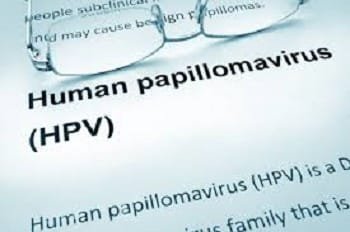Human Papillomavirus (HPV) is a group of more than 200 related viruses, some of which can cause serious health problems. With its widespread prevalence, understanding HPV is crucial for public health awareness and personal health management. This article delves into what is HPV in actuality, its types, transmission methods, symptoms, associated health risks, and prevention strategies.
What is HPV?
HPV, or Human Papillomavirus, is a viral infection that primarily affects the skin and mucous membranes. It is the most common sexually transmitted infection (STI) globally, with most sexually active individuals contracting it at some point in their lives. While many types of HPV are harmless and do not cause symptoms, some can lead to significant health issues, including genital warts and various cancers.
Types of HPV
HPV is classified into two main categories: low-risk and high-risk types.
Low-Risk HPV
Low-risk HPV types (such as HPV 6 and 11) are primarily associated with benign conditions, such as:
- Genital Warts: Small, fleshy growths that can appear on the genital areas, anus, or mouth.
- Mild Dysplasia: Abnormal changes in cells that are not likely to develop into cancer.
High-Risk HPV
High-risk HPV types (such as HPV 16 and 18) are linked to more severe health issues, including:
- Cervical Cancer: Nearly all cases of cervical cancer are caused by high-risk HPV.
- Other Cancers: HPV can also contribute to cancers of the throat, anus, vulva, vagina, and penis.
Transmission of HPV
HPV is primarily spread through direct skin-to-skin contact, which can occur during sexual activity, including vaginal, anal, and oral sex. It is important to note that HPV can be transmitted even when an infected person has no visible symptoms or warts.
Risk Factors
Some factors can increase the risk of contracting HPV, including:
- Number of Sexual Partners: The more partners an individual has, the greater the risk of exposure.
- Weakened Immune System: Individuals with weakened immune systems are more susceptible to HPV infections.
- Early Sexual Activity: Engaging in sexual activity at a younger age can increase risk.
Symptoms of HPV
Most people with HPV do not exhibit symptoms and are unaware of their infection. However, when symptoms do occur, they may include:
- Genital Warts: Soft, skin-colored or gray growths in the genital or anal area.
- Warts in the Throat: Rarely, HPV can cause warts in the throat, known as recurrent respiratory papillomatosis.
- Changes in Cervical Cells: Detected through Pap smears, which can indicate the presence of high-risk HPV.
Health Risks Associated with HPV
HPV poses various health risks, primarily related to cancer. High-risk HPV types can lead to:
- Cervical Cancer: The most well-known consequence of high-risk HPV, with regular screening (Pap smears) being crucial for early detection.
- Oropharyngeal Cancer: Increasingly linked to HPV, this cancer affects the back of the throat and tonsils.
- Anal and Other Genital Cancers: HPV is associated with cancers of the anus, vulva, and penis.
Diagnosis and Screening
HPV is typically diagnosed through:
- Visual Examination: For genital warts, healthcare providers can often identify them through physical examination.
- Pap Smear: Women are recommended to undergo Pap smears regularly to screen for cervical changes caused by HPV.
- HPV Testing: This can be done alongside Pap smears for women over 30 or if abnormal cells are found.
Prevention of HPV
Preventing HPV infection is possible through various strategies:
Vaccination
The HPV vaccine is one of the most effective methods to prevent HPV-related diseases. Recommended for preteens (for kids), the vaccine can also be given to young adults up to age 26, and certain individuals aged 27 to 45 may benefit from it. The vaccine protects against the most common high-risk HPV types.
Safe Sexual Practices
Practicing safe sex can reduce the risk of HPV transmission:
- Condom Use: While not completely effective, condoms can lower the risk of HPV and other STIs.
- Limit Sexual Partners: Reducing the number of sexual partners can help decrease the likelihood of HPV exposure.
Regular Screening
Regular health check-ups and screenings, especially for women, can help detect any early signs of cervical changes before they develop into cancer.
Conclusion
Human Papillomavirus (HPV) is a common virus with the potential to cause serious health issues, including various cancers. Understanding HPV, its transmission, and prevention methods is essential for maintaining sexual health and reducing risks. Vaccination, safe sexual practices, and regular screenings are vital steps in combating the spread of HPV and its associated diseases. By raising awareness and educating individuals about HPV, we can foster a healthier society.
FAQs About HPV
1. Can HPV be cured?
While there is no cure for HPV itself, many infections clear on their own without causing any health issues. Treatments are available for symptoms, such as warts.
2. How common is HPV?
HPV is extremely common; nearly all sexually active individuals will contract it at some point in their lives.
3. Are men affected by HPV?
Yes, HPV can affect people of all gender. Men can also develop genital warts and HPV-related cancers.
4. Is the HPV vaccine safe?
Yes, the HPV vaccine is safe and effective. It is rigorously tested before approval and continues to be monitored for safety.
5. When should I get vaccinated?
The HPV vaccine is recommended for preteens around ages 11-12, but it can be administered up to age 45 in certain cases.
Understanding what the HPV and its criticalness for proactive health management. With the right knowledge and preventive measures, we can reduce the impact of HPV on public health.
Thanks for visiting Gymbag4u.com
You may also love reading few other articles. https://gymbag4u.com/dehydration-symptoms-risks-and-remedies/ and https://gymbag4u.com/asthma-symptoms-precautions-and-treatment/ and https://gymbag4u.com/sleep-apnea-symptoms-causes-and-remedies/
